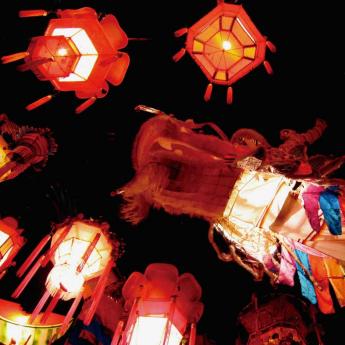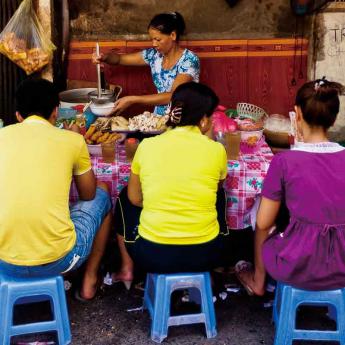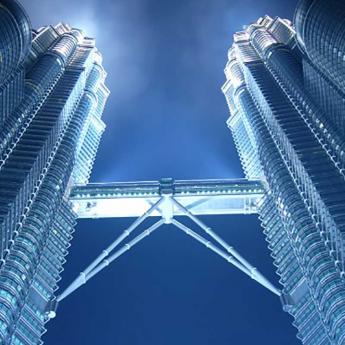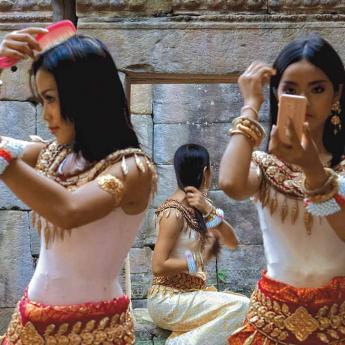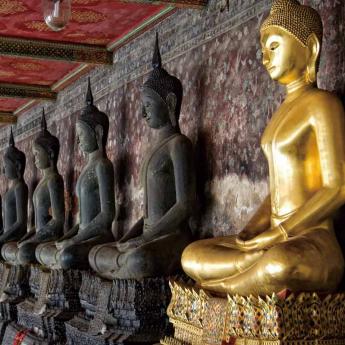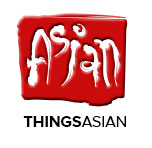On Crocodile Pond
Despite the ravages of war and poaching, Vietnam's national parks still offer rare glimpses of natural beauty.
A red brick laterite road ploughs through rows of shiny-leafed coffee bushes, lurching to a halt at the last dusty village. There's no bridge across the river, so you clank across the slow-flowing Dong Nai in an ancient barge. Clamber up the opposite bank and you know you've arrived. It's imposing. The chintzy balustrades, fancy lamps and colored flags of the two-story park headquarters building are complemented by a fancy fountain, albeit dry.
This preposterous edifice surely belonged at some provincial Party politburo. My companions and I felt more welcome down at the rustic café pavilion just above the riverbank, even if the pockets had come adrift from the billiard table.
Vietnam can send out rather mixed signals to visitors, who must account for every night's halt, even in such outposts as Cat Tien National Park. In this forest reserve in the Central Highlands north of Saigon, your reward for perseverance might include glimpses of the local elephants, the white Javan rhino - found only in two dwindling populations here and in Java, the world's most endangered large mammal - a solitary panther or the gaur, a rare wild ox.
Just don't count on it. Monkeys, wild deer, wild pigs, civet cats or hornbills are more likely to enliven your stay.
Sixty-two species of mammals, 120 different birds and almost 400 trees and plants thrive within this 36,000-hectare forest, north-east of Saigon. The large old-growth trees survived the onslaught of defoliants during the 'American War' and the smaller plants have recovered, but there's something of a hiatus in-between. Two elephant herds survived and have inevitably clashed with villagers whose cane crops have been trampled.
More productive than the garish park headquarters are the watchtowers where 124 rangers keep watch (when not distracted by raucous card games, cooking dinner or hosting foreign visitors) around the perimeter in a brave attempt to fend off poachers.
We tramped down muddy jeep tracks and filtered through shady forests to Bau Sau, Crocodile Lake, for the privilege of spending a restless night high above an enigmatic forest-fringed waterway. Two soldiers passed by on foot, heading down the track to arrest an illegal fisherman, leaving their motorcycle parked under a tree.
Rainforest dipterocarps towered skyward. Buttress roots loomed above our heads, the trunks entangled in lianas and other epiphytes (the parasites of the rainforest canopy) as we manoeuvred around thorny rattan vines and brushed past the humble mimosa, whose leaves contracted in response - a telling signal in war-time. Equally significant were the droppings, the traces of a hanging sloth, perhaps even a forest wolf. Huge dark-winged butterflies clustered over these fetid mounds.
However unintended, the Crocodile Lake ranger station is an inspiration, a boy's own tree house rising three stories, still dwarfed by the forest giant shielding its back. The crocodiles seem to have become casualties, even if the elephants bit back. At 5:45 I awake, not for the first time, from a fitful sleep interrupted at intervals by the menacing buzz of insect predators and the discomfort of bare boards beneath my back.
Good morning Vietnam! Your noodle soup breakfast is ready, warmed over the hot coals, even though the cooks huddled in their cabin until four in the morning, shrieking their way through endless hands of cards. More comforting is a thick, soupy coffee, brewed in the cup the Vietnamese way. Hoa is slowly teaching himself English from a dog-eared text. Time to put it away and wash up the breakfast dishes in water hauled from the well with a counter-balanced plastic bucket. (The toilet is a pit some way down a narrow track, a favourite with small green ants.)
As the fog lifts, a gentle, diffuse light bathes the lake. Memo to rapid response team: do something about those waterlogged dinghies before the next poacher alert. The lake surface is almost tactile, choked with weed which forms hatched patterns across an otherwise unruffled surface. Rangers paddle off to fish for eels, their course leaving a groove through the beds of weed. Beyond the lake are patches, at least, of undisturbed primary forest.
Back on the road, we squeezed into vintage jeeps to plough home through muddy ruts.
Two tribes of Montagnards, Vietnam's minority tribes, have been displaced from these forests, resettled two decades ago to locations ninety minutes down-river from park headquarters. The S'tien now live in little boxes all in a row, out across the fields from the Cho'Mai, with whom they share a schoolhouse. One wonders how willingly they have taken to the sedentary life, but the variety of banana palms, cashew trees, teakwood groves, coffee bushes, runner beans and dry (sticky) rice crops suggests the transformation is comfortable enough. In the Cho'Mai village, the government's stucco boxes, straggling along a dusty road, are being supplanted by the bamboo cabins the people prefer. Shanty churches are stuffed with incongruous white plaster saints and virgins.
A village spokesman aired his rusty French. Behind him in a compound of beaten earth, the syncopated music of a school vacation concert seemed to have lost its tenuous grip on the audience, now kicking footballs in the dust. Under a nearby shelter a noisy petrol-engined contraption husked the rice crop. As the sacks fill they were carried off on the bent backs of women whose bosoms are often already burdened with an infant.
Time to embark again on the glistening brown waters of the Dong Nai. Its verdant banks of maize, bamboo and forest trees were accentuated by the banks of billowing tropical clouds overhead, now turning to a gentle peach color even as sheet lightning erupted in the other direction and mist settled into the distant valleys. Smallholders wave from doorways above the river or turn from evening chores by the water's edge. Amidst such tranquility we could almost overlook the deafening clatter of our jerry-built launch and its rock-hard plank seats under a lean-to canopy.
Fact File
Cat Tien National Park, sometimes called Nam Cat Tien, lies north-west off the Dalat highway (Route 20), about 240 km (144 miles) north of Saigon, 150 km (90 miles) from Bien Hoa. Without maps or signposts, trekking without a guide would be foolhardy. Saigon travel agents in Saigon may be able to arrange transport, treks and accommodation.
 ThingsAsian
ThingsAsian









